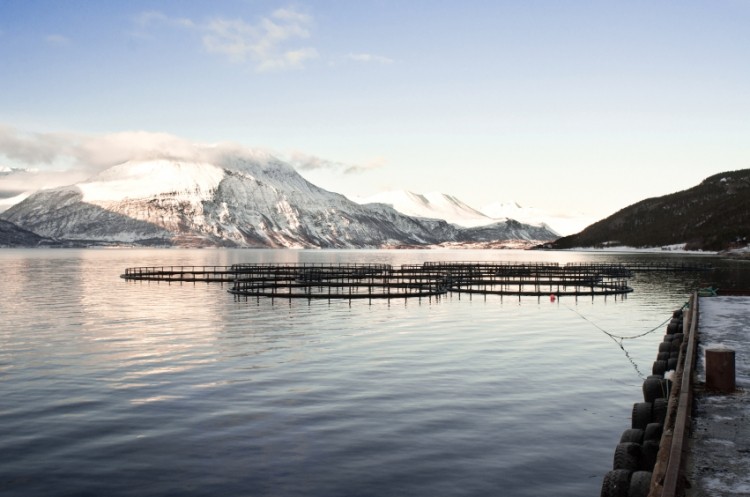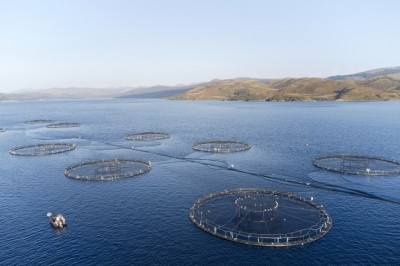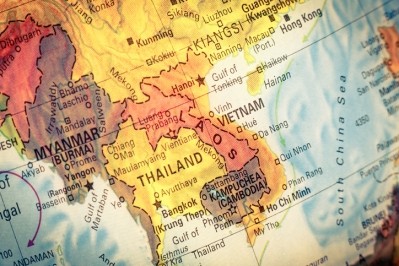Record low FIFO ratio for salmonids: IFFO

The marine ingredients organization, the IFFO, said it has calculated new FIFO ratios, based on FAO data, for 2015.
“The salmonid feed industry supports the production of more farmed fish than it uses as feed fish, which appears to be the first time this has been recorded,” said the London based group.
It noted that salmonid farming, in particular, has been the subject, in past years, of criticism in relation to its FIFO ratio.
In its broader sector analysis, the IFFO said the 2015 data showed that for every 1kg of wild fish consumed by the aquaculture industry as feed, a total of 4.55kg of farmed fish was produced in 2015.
In summary, the organization found that:
- For all fed aquaculture, the FIFO is 0.22:1 (2015), or 1:4.55
- The conversion of wild feed fish to farmed salmon is 1:1.22 (2015).
FIFO has been used as a way of reviewing the consumption of wild fish by the sector since the 1990s - the IFFO previously provided figures for FIFO for 2000 and 2010; it has now updated these using 2015 production and consumption data.
“We see, in general, that fed aquaculture species are showing a reduction in the FIFO calculation. This, of course, is not unexpected, as the inclusion rates for fishmeal and fish oil have been declining as more aqua feed volume is produced against a background of finite annual fishmeal and fish oil supply."
However, the FIFO rate for crustaceans such as farmed shrimps is similar to the 2010 figures. “This may be readily explained by the impact of the disease problems in the sector, reducing yield and affecting FCRs, set against a fishmeal inclusion rate that has declined only slightly between 2010 and 2015 when viewed across the industry,” said the IFFO.
The organization said the declining FIFOs reflect the use of fishmeal and fish oil as strategic ingredients at key points in aquaculture production cycles.
“On the whole, this is a very positive message about the contribution that marine ingredients make to global protein production.”
Calculation method
The IFFO said it calculated the FIFO ratios by reliance on FAO production data to provide estimates for aquaculture production tonnages by species groups; it used standard yield figures for fishmeal (22.5%) and fish oil (4.8%) applied across all raw materials in production,
It also applied estimates for industry use of byproduct in fishmeal and fish oil production (currently at 33%), and it said it used industry-wide feed inclusion levels for fishmeal and fish oil, feed conversion rates (FCR), and regional proportional fed volumes estimates based on expert opinion.
Robust defense
This month has also seen IFFO defending the marine ingredients sector against what it claims are false statements about fishmeal and fish oil production released by those running the F3 international fish feed competition - a contest looking to stimulate the development of fishmeal and fish oil substitutes.
One of the claims made by the organizers of the F3 Challenge is that the marine ingredients sector’s reliance on forage fish - sardines, anchovies and menhaden – is threatening the very existence of seabirds and marine mammals that are sustained by such pelagic varieties.
Disputing such claims, Dr Neil Auchterlonie, IFFO technical director, told us research published in the journal Fisheries Research in April this year found that fishing of forage species likely has a lower impact on predators than previously thought, challenging previous studies that argued forage fish are more valuable left in the ocean.
While the science is still developing, Auchterlonie said the study led by Professor Ray Hilborn of the University of Washington demonstrated very clearly that models used in previous analyses were insufficient.
That research also indicated that in managed fisheries environmental factors like El Niño events have more of an impact on stock populations of small pelagic fish than fishing, he added.
The Hilborn paper showed predator populations are less dependent on specific forage fish species than assumed in previous studies, most prominently in a 2012 study commissioned by the Lenfest Ocean Program, which is managed by The Pew Charitable Trusts.
In fact, Auchterlonie said the University of Washington research found multiple omissions in the methodology used in the Lenfest study, specifically, that it and another study using ecosystem models ignored the natural variability of forage fish, which often fluctuate greatly in abundance from year to year.
The previous studies also relied on models that took for granted there should be a strong link between predators and prey. The paper by Hilborn et al found that the distribution of forage fish has a greater impact on predators than simply the raw abundance of forage fish, and that distribution had not been examined previously, said Auchterlonie.
That research also demonstrated that previous studies did not take into account the fact that predators tend to eat smaller forage fish that are largely untouched by fishermen, he added.








